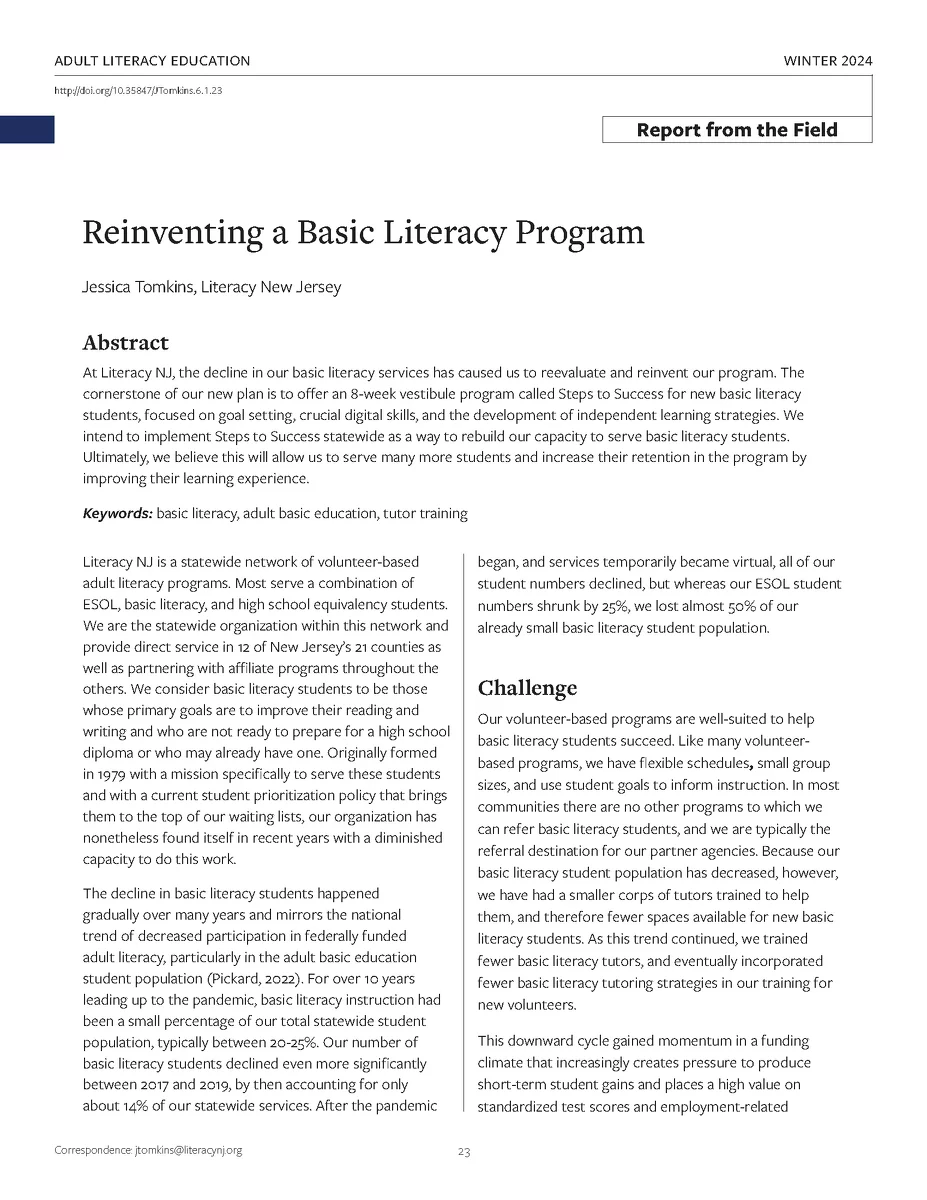Popular ESL Author’s ‘Long Stories Short’ Builds Reading and Language Connections
The new ESL series from New Readers Press uses entertaining stories as the basis to teach vocabulary, grammar, spelling, syntax, pronunciation, and more.
Get the latest news and stories from the adult literacy field.
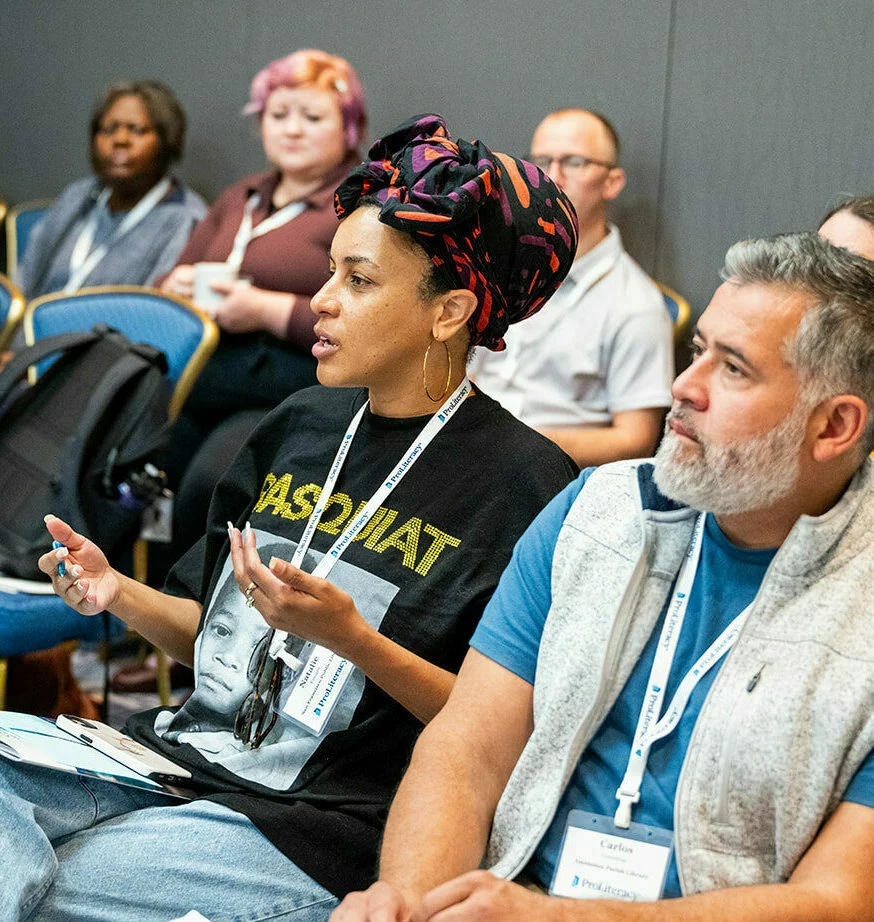

The economic and social prosperity and stability of our nation—and our local communities—depend on the ability of adults to read, write, do basic math, and think critically.
The new ESL series from New Readers Press uses entertaining stories as the basis to teach vocabulary, grammar, spelling, syntax, pronunciation, and more.
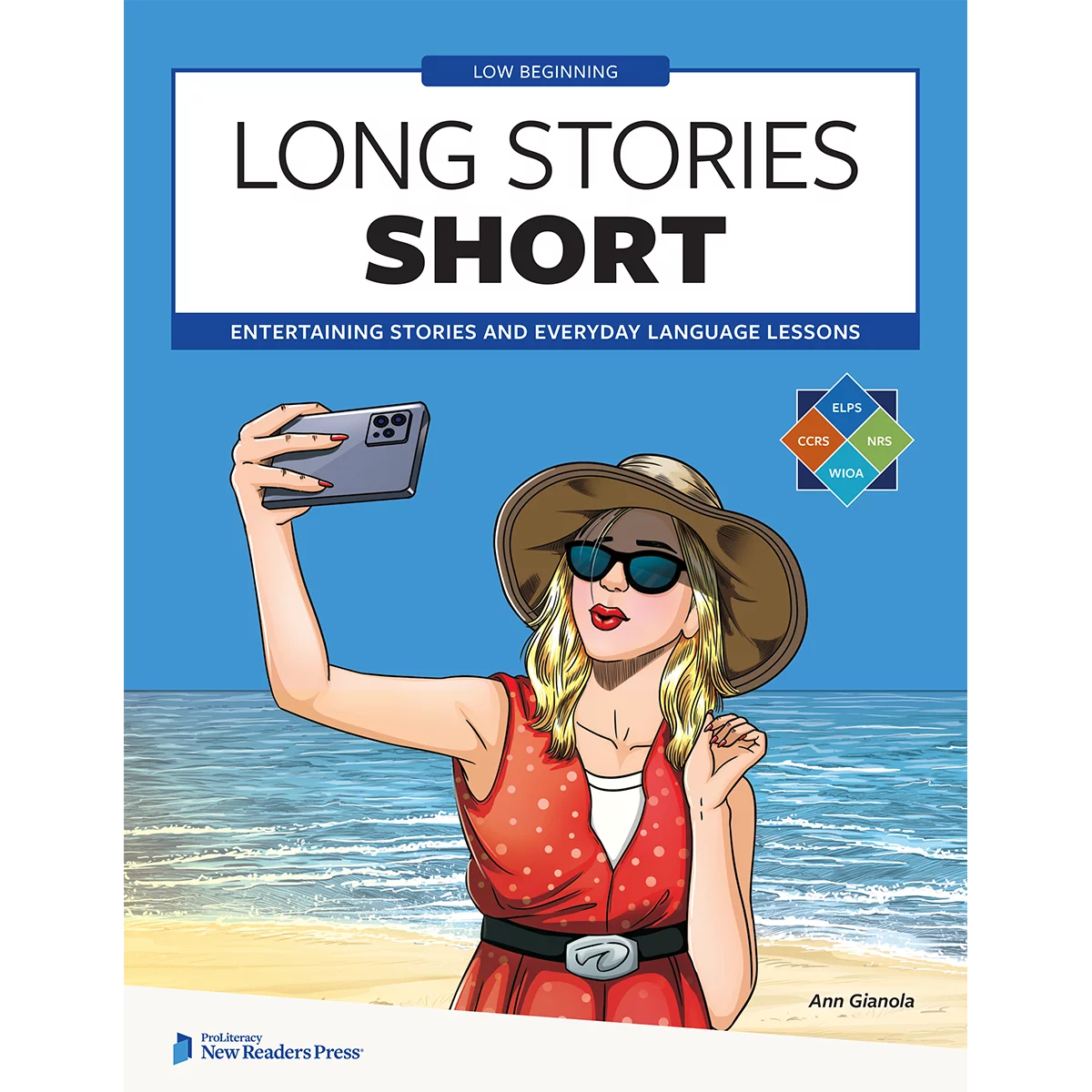
Project Learn of Summit County, in Akron, OH, uses National Book Fund gran to support its math bootcamp program to help students earn GED credential

The goal is to attract volunteers to your adult literacy program and then keep them coming back. When you look at the big picture, it’s easier than you think.
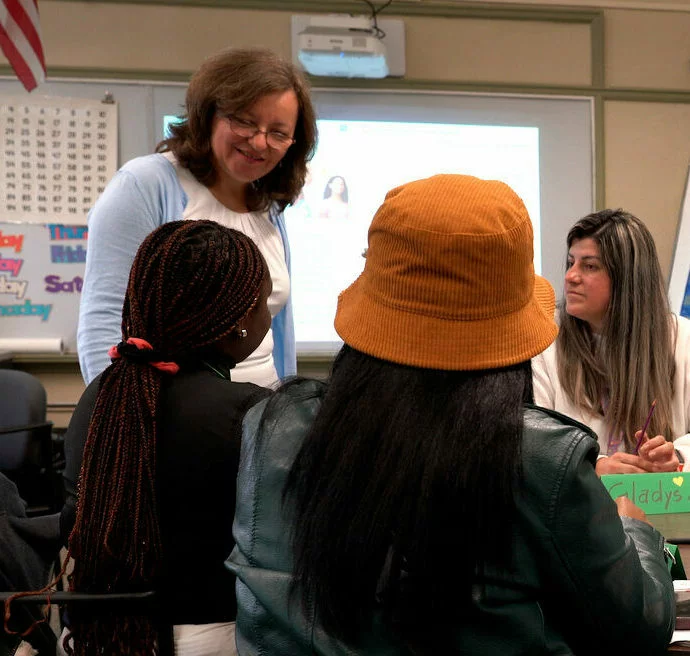
Three adult education networks share their experiences working with social service providers to create a community-based approach to literacy education.
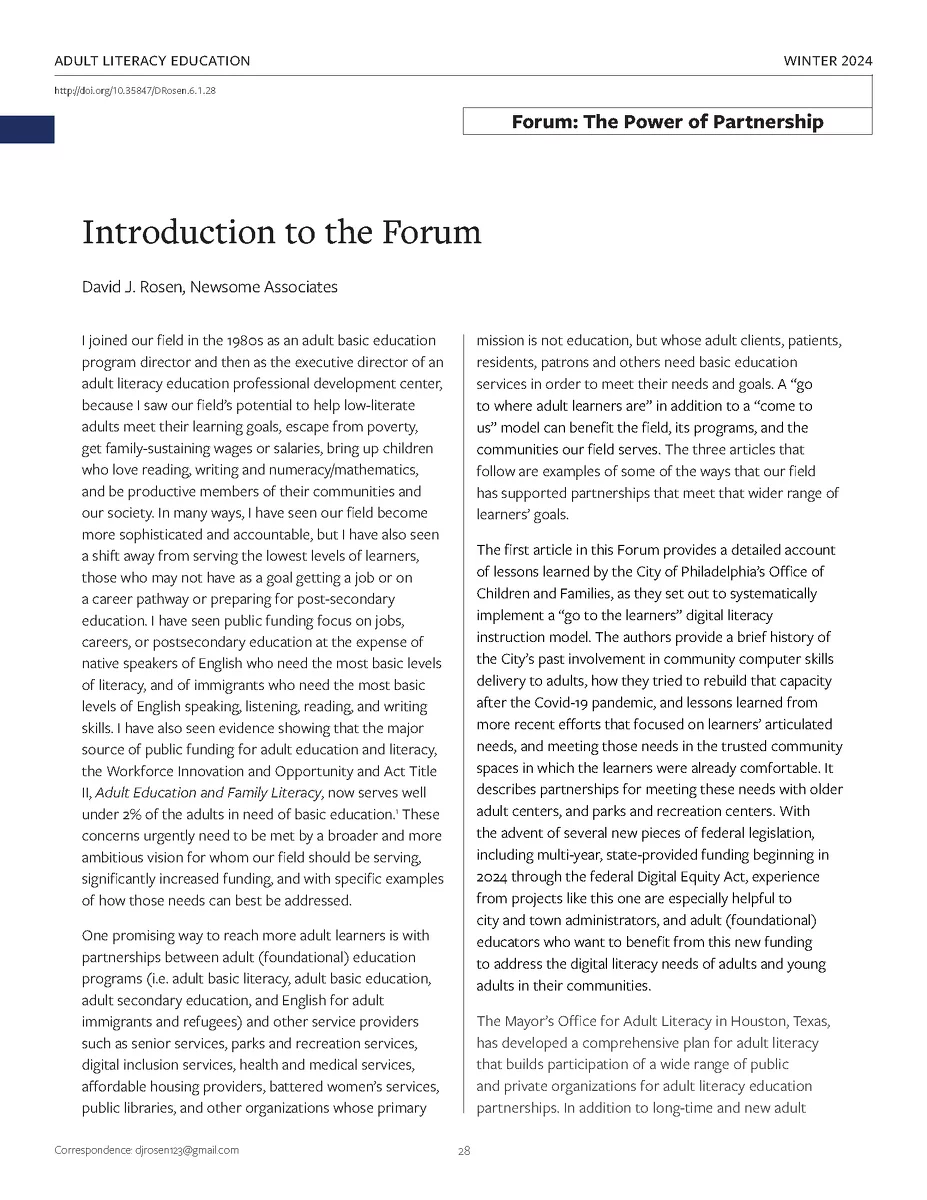
Day in and day out, ProLiteracy works in the US and internationally to educate women, which is one of the foundations to achieving gender equality.

Literacy NJ is taking steps to prioritize adults at the lowest literacy levels by implementing a new Steps to Success initiative.
